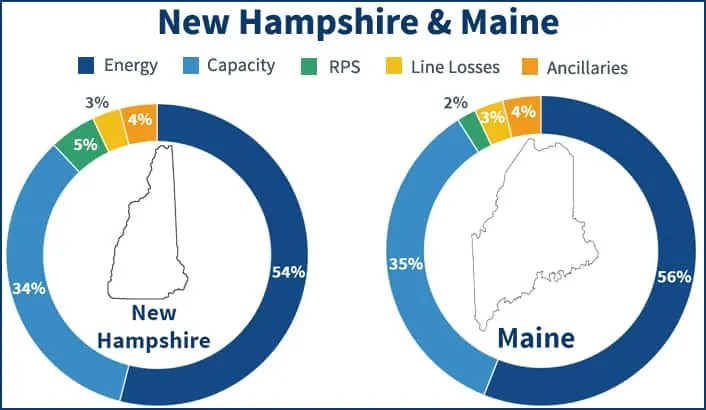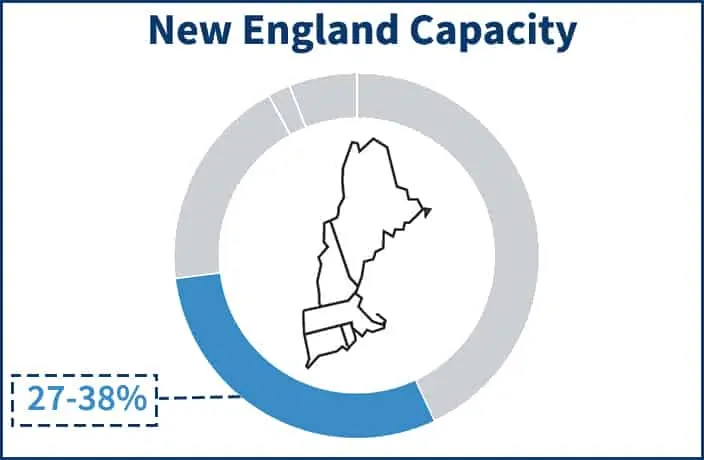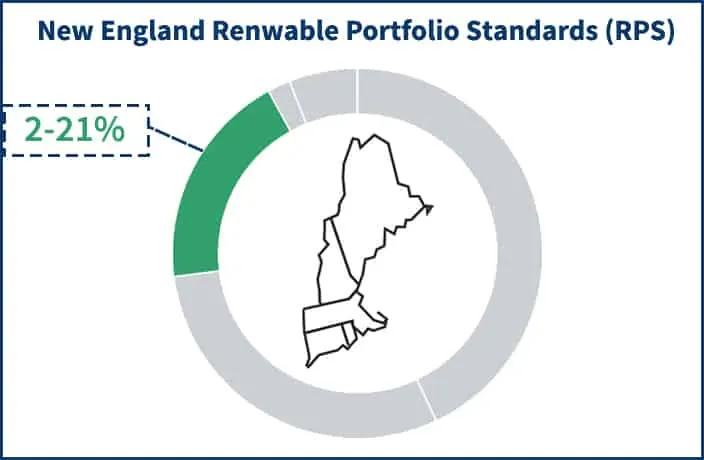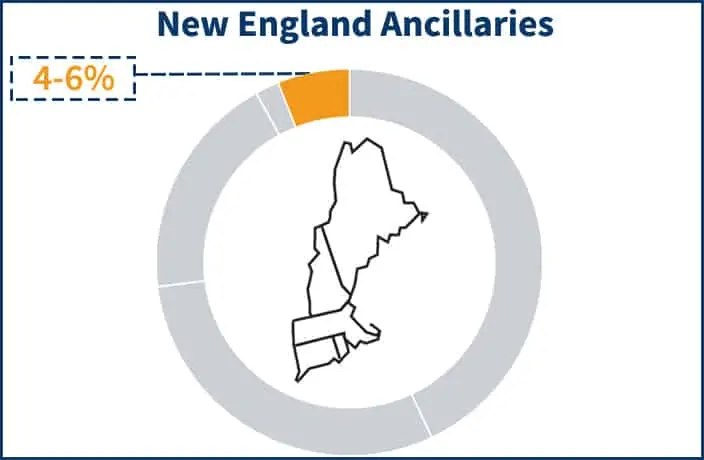In the regions of ISO New England, the price you pay your energy supplier for electricity is made up of multiple components.
Each component has its own nuances and requires a strategy to ensure you are maximizing its cost avoidance potential. Furthermore, these price components vary widely depending on your service zone, usage, and a multitude of other factors.
The body that oversees, coordinates, and operates the electrical system in a region is called the Independent System Operator (ISO). There are 5 ISO regions throughout the US. Best Practice Energy typically services clients in 3 of these regions:
- NYISO (New York)
- ISO-NE (New England: Massachusetts, Rhode Island, Connecticut, Maine, and New Hampshire)
- PJM Interconnection (serves parts of Delaware, Illinois, Indiana, Kentucky, Maryland, Michigan, New Jersey, North Carolina, Ohio, Pennsylvania, Tennessee, Virginia, West Virginia, and the District of Columbia)
The components that make up the electricity supply price come from each ISO. Many are consistent, however, their proportions in an electricity price vary significantly.
This post will focus on the components of an electricity price for ISO New England (ISO-NE). We also have posts that overview electricity prices in PJM as well as in New York.
For information on the pricing of natural gas, be sure to check out our post, The Components of Your Natural Gas Supply Price.
ISO New England: Massachusetts, Rhode Island, Connecticut, New Hampshire, and Maine

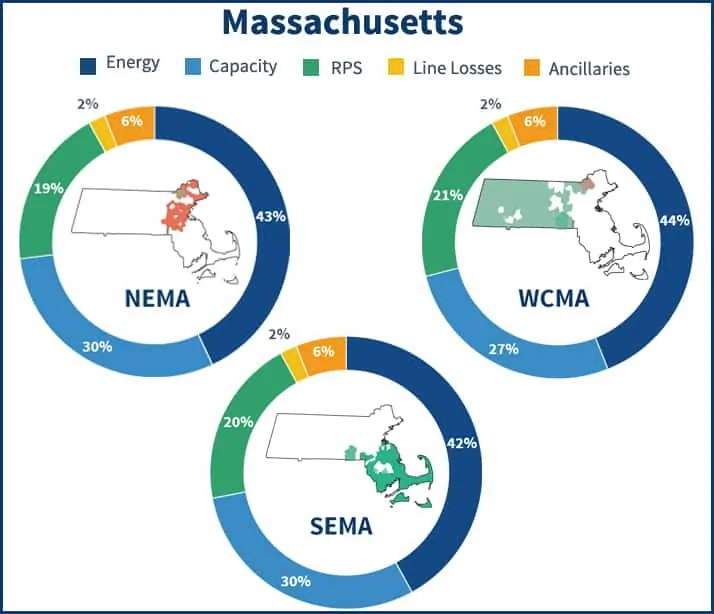
As seen above, the price components in an electricity price are consistent throughout ISO New England serviced states. However, the proportions of each vary from state to state.
Energy
Energy represents the electricity commodity that is generated in power plants and other sources. Regardless of the state, this price component occupies the largest portion of the electricity supply price. The cost of this is determined by a building’s usage per kWh.
Capacity
Capacity (capacity tag) represents the rate paid for the demand or maximum amount of power your facility requires operate. More succinctly, capacity is how much electricity needs to be produced and available for use, but not the electricity itself. Due to the demand of buildings, the electrical grid also has its own capacity needs. If there is not enough generation available to handle the grid’s peak load, brown and black outs can occur.
New England capacity rates (capacity tags) are determined by your electricity usage during one hour of one day. This peak day is the day of the year where the most power is being drawn from the grid. The peak day usually occurs during sustained heatwaves in the summer months. Fortunately, there are steps you can take to reduce your capacity tag. To do this, you strategically curtail your usage on peak day so your electrical meter shows a lower number. This process is called peak load management.
Our complimentary Peak Notification Service helps you design and implement a peak load management plan. When we predict a peak event, our service contacts you so you can curtail at the right times. Successful peak load management can help you significantly reduce capacity costs. One client of ours saved $90k on their capacity costs in 2020 using the service!
Renewable Portfolio Standards (RPS)
Renewable Portfolio Standards (RPS) are a percentage of your electricity supply price that is required to come from renewable resources. As green and renewable resources energy grows, the cost and amount of RPS required for an electricity supply will increase. The cost of RPS is very dependent on state-specific legislative and regulatory decisions.
We monitor legislation very closely to provide our clients with visibility and protection against these types of price surges. When RPS prices skyrocketed in Massachusetts, we helped our clients lock their RPS costs in before their contracts were affected.
Line Losses
Line Losses are a very minimal piece of an electricity price. They represent the quantity of electricity that is lost in the transportation and transmission of it throughout the grid. This is because electricity must travel far through transformers and high-voltage transmission lines from its generation point to a building. Due to heat dissipation, small amounts are lost throughout its journey. These costs exist because enough electricity must be purchased by utilities to cover the estimated consumption of the grid area.
Ancillary Services – ISO New England
Ancillary Services represent the cost of services that support and power the entire system to ensure operations are always reliable. Although relatively small, ancillary services are vital to the grid’s health, especially during heavy demand or amid emergencies. These services are similar in all ISO regions, however, the specific services vary from ISO to ISO. Here is a look at the ancillary services of ISO New England.
We educate our clients on the nuances of each component of their electricity price. This is done so they understand what costs can be managed down as well as what costs are unavoidable. The goal here is to empower them to make sophisticated and intelligent decisions about their electricity contracts & energy plans.
These prices are constantly changing throughout the country and this is no different in ISO New England. We keep an eye on each component to help clients strategically lock them in at the right times. This ensures business achieve their cost avoidance and budget goals.
Contact us today to discover how we can help you achieve maximum cost avoidance on your electricity bills through sophisticated, proactive strategies for each price component.

